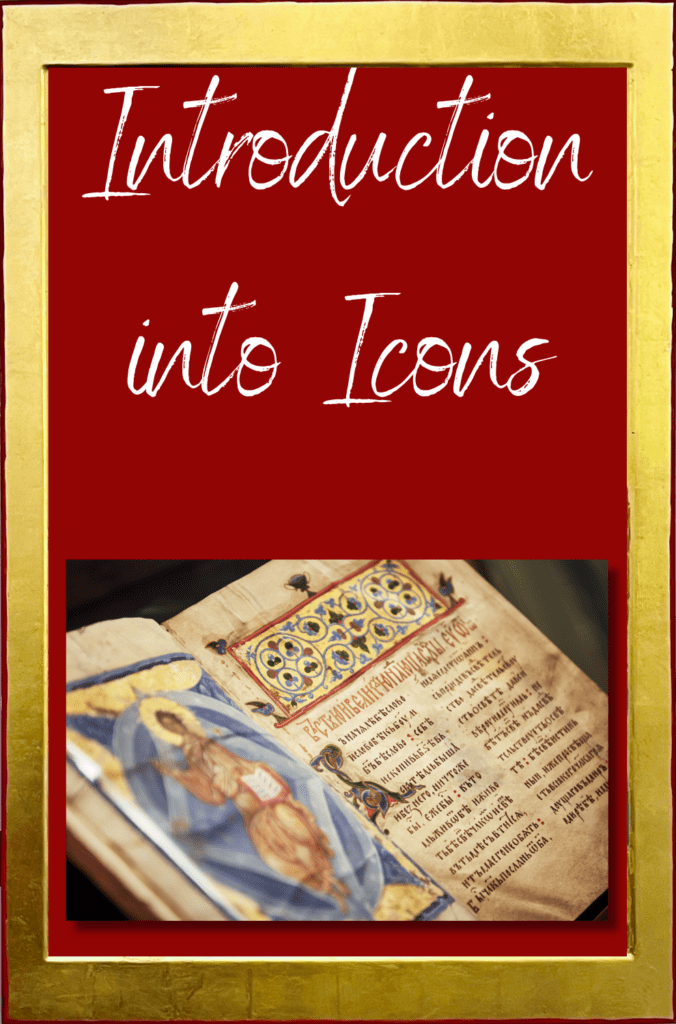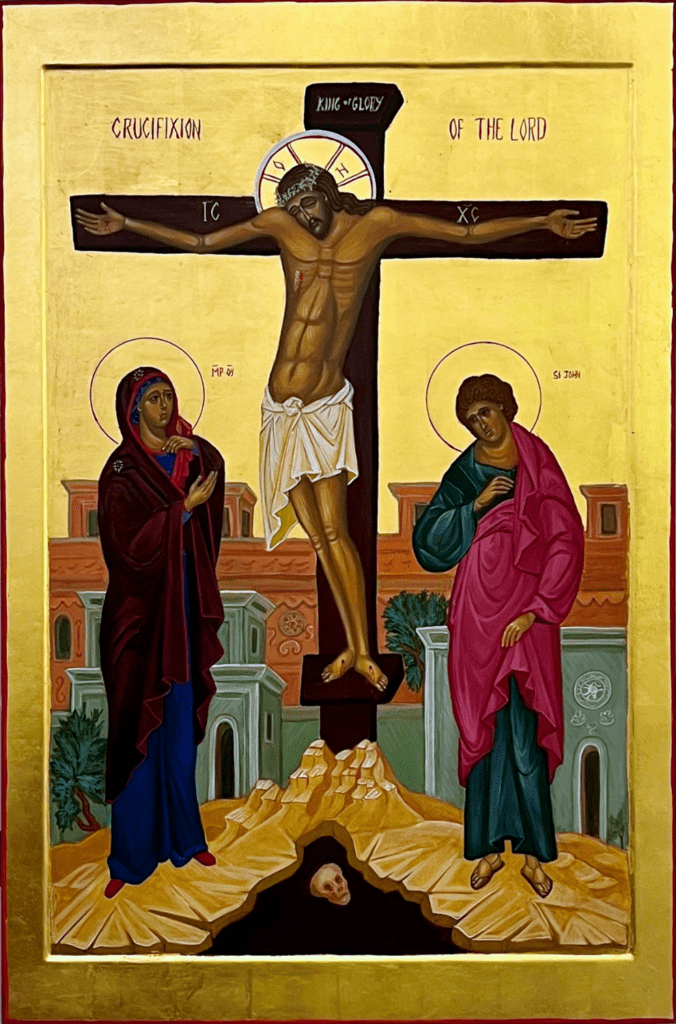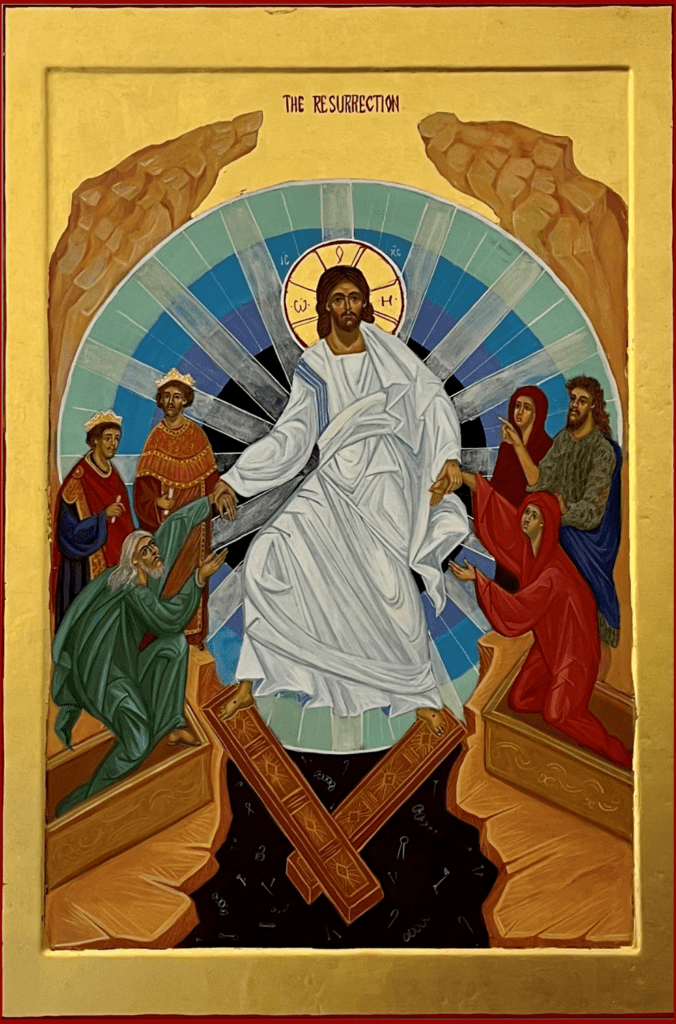Written By: John Menghini

Recently, we have installed three beautiful icons in our Adoration Chapel. The first icon, which was hung December 2022, is of the “Crucifixion of the Lord.” The second icon, “The Resurrection” was hung in April 2023. Our most recent icon, “Ascension of Our Lord” was hung in October 2023. All three icons were created by an iconographer from Coronado, California by the name of Maidie Weisbarth.
An Icon is a religious “work of art”, most commonly a painting (known as a “writing”) on a wooden board or “block”. Its most ancient origins are found in the Eastern Orthodox, Russian Orthodox and Catholic Churches. The earliest record of Christian Icons goes back to the 4th Century. Icons are considered an essential tool of Church teaching and are given special liturgical significance. They serve as mediums of instruction for the faithful, designed to communicate theological truths that Holy Scripture reveals in words. Icons were effectively used for Christian instruction throughout history; particularly before the Bible became widely available in the 16th century.
Unlike other forms of religious art that can be prayerful, iconography adheres to a somewhat regulated and intentional process. From start to finish, the creation of an icon is an exercise in prayer and contemplation. There are clear guidelines related to how God the Father, Son and Spirit may be depicted in order that each icon may be properly utilized in prayer. The image doesn’t change just as the words in scripture don’t change. In a powerful sense, icons are intended to serve as a “window into heaven”. They illumine the mind and inspire the heart through the visual expression of God’s divine word.
- Icons are typically painted on wood. The wood serves as a reminder of the Tree of Knowledge and life before the fall.
- The wood is wrapped in linen. The linen is symbolic of the burial cloth of Jesus.
- The artist prays and prepares the “wooden block” that he/she may “write” God’s holy word in conformity with sacred scripture.
- Clay and glue (gesso) are applied over the linen and used as a base for the pigments and to remind us of the creation account in which Adam was formed from the clay of the earth.
- Icons are typically embellished with gold gilt to emphasize the light of Christ.
Highly symbolic and full of meaning, religious icons become vehicles for profound meditation and prayer for all who look upon them with the eyes of faith. “This seeing” is not restricted to our sense of sight but rather directed to our “eyes of faith” and our contemplative vision. You have heard it said, “that a picture is worth a thousand words;” never is this more true than when gazing on a holy icon.
Unlike other forms of religious art that might demonstrate an artist’s talent or skill, icons are never meant to be a reflection on the artist, but only a reflection on God Himself and His holy word. Icons are never signed by the artist as that might divert one’s attention away from the sacred.
Please come and pray before the Blessed Sacrament and see how reflecting on these icons might enhance your prayer and contemplation.



